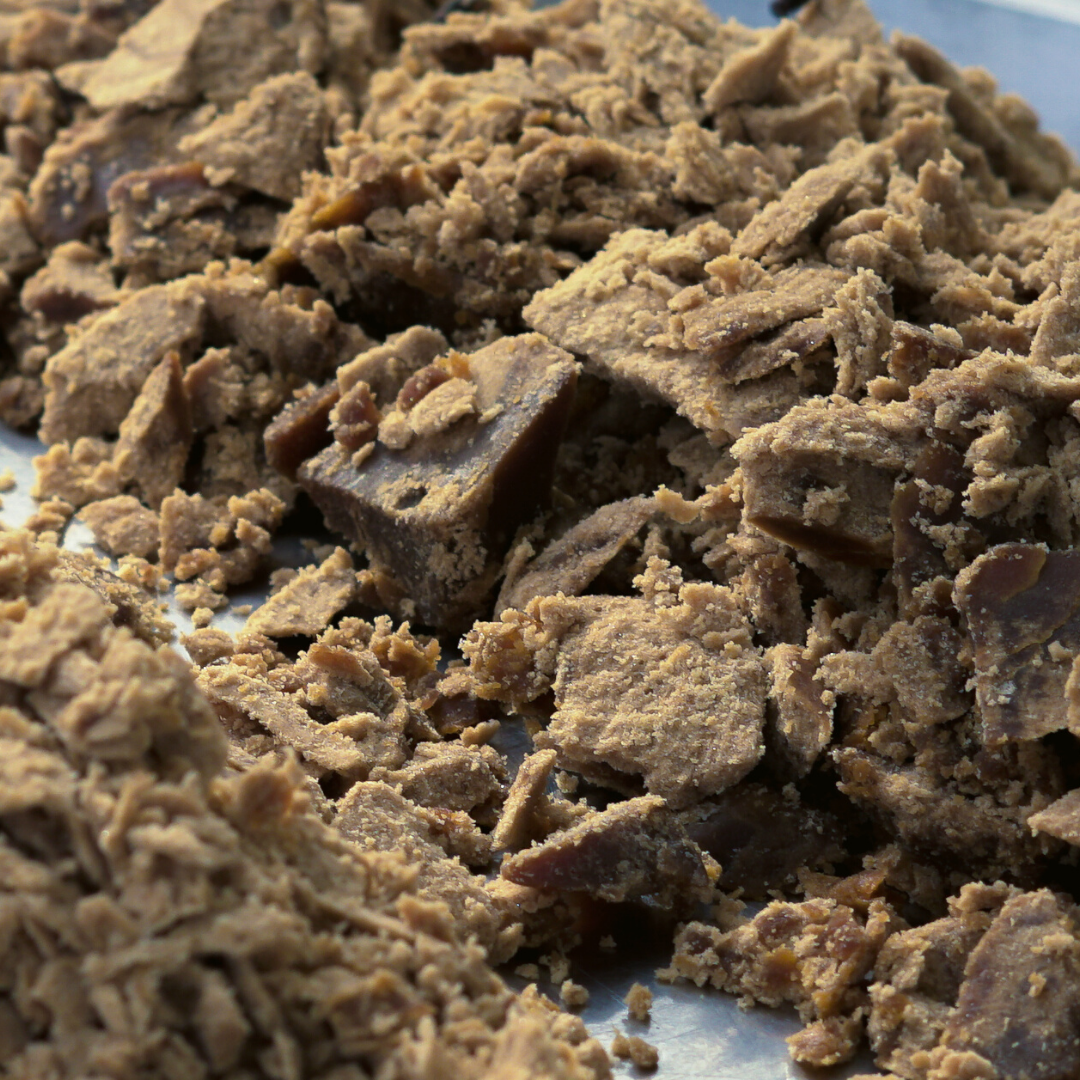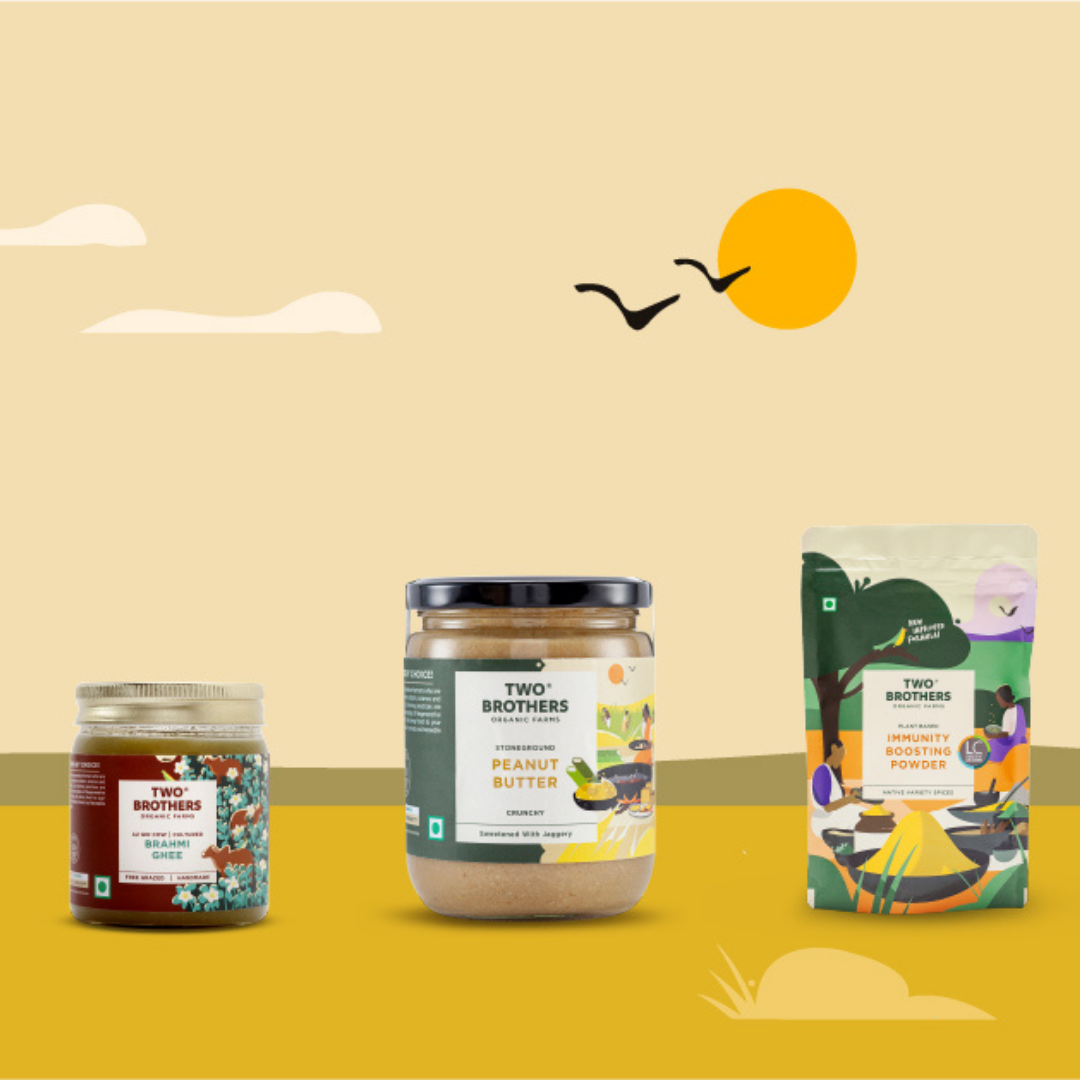Varied textures for Ghee - right from full liquid granulated, semi liquid granulated, small negligible granules to paste-wax like texture; is natural and should not be a matter of concern.
Are you a fan of the liquid-like flowy consistency of the
TBOF Ghee? The perfect combination with
Metkut or the South Indian
Podi (lentil spice mix) - tastes so divine with simple
varan bhaat or dosa/idli.
Ever wondered why our Ghee is liquid like and not the thicker consistency you can scoop out with a spoon? Some customers, especially the ones buying from us for the first time, wonder why the Ghee is so pourable and liquid like - because many other options available in the market do not have an easily pourable consistency.
There are many reasons for this:
- The Ghee is made from Curds formed by directly culturing fresh Cow's milk and not by using collected cream. The resulting ghee is light on the stomach and easy to digest.
- When stored at room temperature (30-32 deg celsius), it retains the liquid consistency, and if there is drop in temperature or if stored in a refrigerator, it could slightly attain a semi solid thicker consistency.
- The texture of the ghee also varies a lot depending on the process, storage conditions and ambient temperature - when stored at temperatures between 18-22 deg celsius, granule formation happens.
Then if the Ghee is exposed to an increase in room temperature (32-35 deg) this granular texture is affected. Storing again in the fridge will change the texture and further exposure to higher temperatures will largely alter the texture. The inconsistencies in storage temperature makes the texture almost waxy or like a paste as shown in the picture below. It's important however, to note that this DOES NOT have any impact on the quality of the Ghee.
So if you receive a bottle with flowy pourable liquid ghee (as shown in the video) and you want a slightly more semi solid thicker consistency for your ghee, all you need to do is to leave the bottle in the fridge. Do not worry about quality. On the other hand, if the Ghee is paste-like with a waxy texture, granules undefined - please scoop out some portion as needed into a steel container and heat it slightly, either on direct gas flame or leave it in a plate filled with warm or hot water.
If you are wanting to check the quality, these are some signs you can look out for -
Does the ghee smell even slightly foul or weird, any discoloration or fungus like growth in the bottle, taste - if the ghee doesn't taste good or pleasant? Please reach out to us if you experience any of these issues.
GRANULATION IN GHEE
Have you observed granules evenly distributed through the ghee. If you buy ghee from us regularly then this is not new to you, but have you wondered why this happens, if its something we strive to achieve or if this granule formation has some nutritional significance?
Medium sized, Semolina/Rawa-like granules distributed throughout the ghee is a sign of superior quality ghee. Granularity in ghee or texture of ghee is something we must be particular about as much as its colour and taste when buying a bottle of Ghee.
Makkhan that is churned from curds is a mixture of various types of fats (both saturated, unsaturated) and hence the process of crystal formation in ghee is a complex one. The crystallization of the fat molecules in makkhan is what leads to this granule formation. Some of these fatty acids melt at very high temperatures (for eg palmitic and stearic fatty acids) and large size granule formation is attributed to the presence of these fatty acids in big quantities in the ghee.
There are various factors affecting granule formation in ghee - the type of milk used, the fodder/feed the cows were on, breed of cows / buffalos, temperature at which the ghee is made, steps involved in the making of ghee, storage conditions (temperature) etc.
When the cows are fed on grass or green pastures the granules are medium -large and soft fat molecules while they are big-large in size and hard grain-crystal like if the cows were fed on cottonseeds or dry feed - (Think of ghee that hardens to the extent that scooping out with a spoon also is difficult in some cases or the application of heat is required to melt it!).
The desi method of converting milk /cream to curds and churning the curds slowly to collect Makkhan and then clarifying this freshly churned raw butter produces ghee with larger size uniform grains as against the industrial production of ghee from cream or cream-butter that is directly melted and clarified. In most cases the direct cream method produces ghee with no granules at all or very tiny size granules that go unnoticed.
Rate of cooling also affects formation of granules - when the ghee is allowed to cool naturally and slowly the granules are small-to medium sized while the grains could be more distinct and larger if the ghee is stored under lower temperatures immediately after it is clarified.
Storage conditions are very important too - if the ghee is stored under temperatures that are not maintained and keep fluctuating, then this deteriorates the grain distribution in ghee. Size and quality of grains in better at 26-28 deg Cel than storing at temperatures higher than 35 deg Cel.

A bottle of Shuddh Desi Cow Ghee prepared the traditional way will have small-to-medium sized soft grains evenly suspended throughout a mild-to-deep golden yellow medium with its characteristic nutty aroma!























2 comments
Naveen V
What is reason direct cream method ghee dose not form granules
What is reason direct cream method ghee dose not form granules
Thota Nagaraju
Namastay sir zee to TBOF , I am very happy to listen to your vedio, need a help from you to train further myself in doing organic farming , I am having a small agriculture land , plz help me sir , your help will save me and the society to get rid of chemicals, thanq sir
Namastay sir zee to TBOF , I am very happy to listen to your vedio, need a help from you to train further myself in doing organic farming , I am having a small agriculture land , plz help me sir , your help will save me and the society to get rid of chemicals, thanq sir